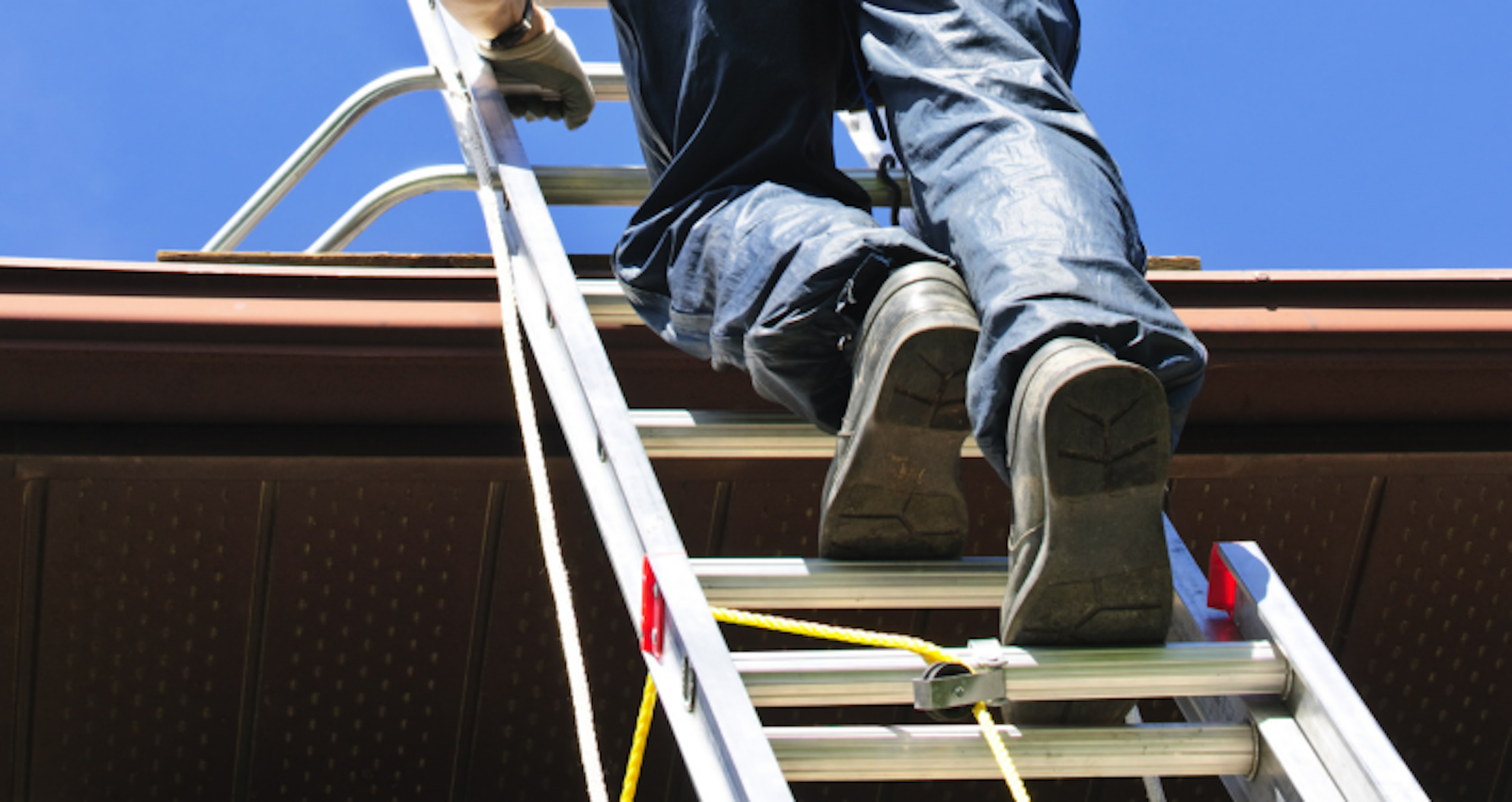5 Essential Requirements for Reliable Ladder Inspection Tags
How can you ensure your ladder inspection tags are reliable and effective in maintaining workplace safety? Find out the five essential requirements to look for when sourcing your facilities’ ladder inspection tags.
Working with ladders is an essential part of many processes within major industries such as construction, manufacturing, and maintenance. However, ladders present inherent risks to personnel, which can lead to potentially fatal falls from height.
Unstable ladder setups, defects, or improper usage can contribute to accidents and injuries and increase the likelihood of falls. Additionally, inadequate training on ladder safety, overreaching, and carrying heavy loads while on a ladder further heighten these risks. It is crucial for workers to be aware of these hazards and adhere to proper ladder usage protocols to ensure their safety while working at heights.
This is exactly where ladder inspections come into play. Ladder inspections are an essential part of maintaining workplace safety in industries that utilise ladders. These inspections involve a thorough examination of ladders to ensure they are in proper working condition and free from any defects or damage that could compromise the safety of workers. The primary purpose of ladder inspections is to identify and address potential hazards before they lead to accidents or injuries. By regularly inspecting ladders, employers can mitigate risks associated with structural integrity, stability, and other factors that could result in falls, slips, or other accidents.
Ladder inspection tags are used to streamline and facilitate the inspection process, serving as a visual indication that a ladder has undergone inspection and is safe to use. They are typically attached to the ladder, providing a quick and easy reference for workers and inspectors to determine the status of the ladder.
So, how can you ensure your ladder inspection tags are reliable and effective in maintaining workplace safety? Find out the five essential requirements to look for when sourcing your facilities’ ladder inspection tags.
1. UV and fade-resistant inspection tags
Ladder inspection tags go through a lot of wear and tear, especially when used in harsh working environments exposed to various elements. Just like safety signs, ladder inspection tags can be affected by factors such as direct sunlight, extreme heat, or radiation.
UV rays, in particular, have a photochemical effect on the materials commonly used for traditional ladder inspection tags. Over time, this can cause colours to fade and the material itself to deteriorate and crumble. When cheaper, less durable materials are used, the tags may become unreadable which can lead to confusion and jeopardise the safety of workers.
To ensure that ladder inspection tags remain effective and legible for an extended period, it is recommended to invest in tags manufactured from UV and fade-resistant materials. By using such high-quality materials, the tags can withstand the damaging effects of UV rays, maintaining their clarity and durability. This, in turn, helps to reinforce the importance of ladder safety and ensures that vital inspection information remains clearly visible for a longer duration.
2. Customisable ladder inspection tags
Ladder inspection tags aren't always a one-size-fits-all solution. Generic tags with standardised wording and symbols may not adequately address the unique safety challenges faced by multinational corporations. However, customisable tags provide the flexibility to design bilingual or multilingual signage, ensuring that critical safety information is accessible to all workers, regardless of language barriers. Additionally, custom tags allow you to add company branding to increase the impact of your messaging.
By using customisable ladder inspection tags, you can create a safer working environment that caters to the diverse needs of the workforce, promoting effective communication and reducing the risk of accidents or injuries.

3. QR codes and barcodes
The availability of ladder inspection tags with QR codes and barcodes offers significant advantages for maintaining workplace safety. These codes streamline the inspection process by enabling efficient data collection and simplifying documentation. With a simple scan, inspectors can access crucial information about the ladder, including inspection dates, maintenance records, and any specific notes or observations. This enhances traceability and accountability, as each scan creates a digital record, providing a clear audit trail of the ladder's inspection history.
By incorporating QR codes and barcodes into ladder inspection tags, organizations can improve efficiency, accuracy, and documentation while promoting a safer working environment.
4. Sustainable inspection tags
As corporations increasingly strive to reduce their carbon footprint and achieve sustainability goals, it is important to consider the environmental impact of these tags. In line with sustainability efforts, many large corporations in critical industries are embracing more eco-friendly safety cultures. This includes the use of safety signage and tags made from sustainable and recyclable materials.
Opting for ladder inspection tags made from 100% recyclable materials is especially crucial for tags that have a shorter lifespan, ensuring that no waste ends up in landfills. By prioritizing ladder inspection tags made from sustainable and recyclable materials, you can align safety practices with your commitment to environmental responsibility. Such a conscious approach ensures that safety protocols remain in place while contributing to a greener future for critical industries.
5. Legible ladder inspection tags
To effectively fulfil their purpose, ladder inspection tags must be legible and easily understandable.
Poorly printed ladder inspection tags can result in employees misinterpreting or overlooking critical safety information, putting them at risk of harm. It is therefore essential to ensure that safety signs in critical industries are printed with utmost clarity and accuracy, leaving no room for confusion.
To evaluate the clarity of a ladder inspection tag design, it is recommended to seek feedback from a colleague who hasn't seen the sign before. Ask them to explain the message conveyed by the tag. This exercise can help identify any potential confusion or misunderstandings that the tag may create. By soliciting feedback and addressing any ambiguities, you can enhance the effectiveness of ladder inspection tags in delivering clear and understandable safety information to personnel.
Compliant ladder inspection tags from REGALTAGS
REGALTAGS Ladder Inspection Tags make routine assessments very simple to carry out and remove the need for holders which can become damaged or detached.
The full Ladder Tag Kit provides safety labels to prevent use when not inspected. It also includes an invaluable ladder angle indicator to quickly show workers when their ladder is correctly set up and safe to use.
These ladder tags and kits are stocked and available for quick delivery, and as always with REGALTAGS, a full bespoke design is available to suit any unique requirements.
Specifications:
- Material: Prism polypropylene
- UV resistant
- Freeze resistant
- Fully customisable design
- In stock for quick delivery
- Available in convenient kit form
- Available with VARiTAG® unique numbering
- Available with QR codes/barcodes
- 100% recyclable
Request a ladder inspection tag kit or contact a member of our team for more information.
Subscribe
Join 10,000+ others receiving our monthly updates. Free Tag knowledge delivered straight to your inbox.






